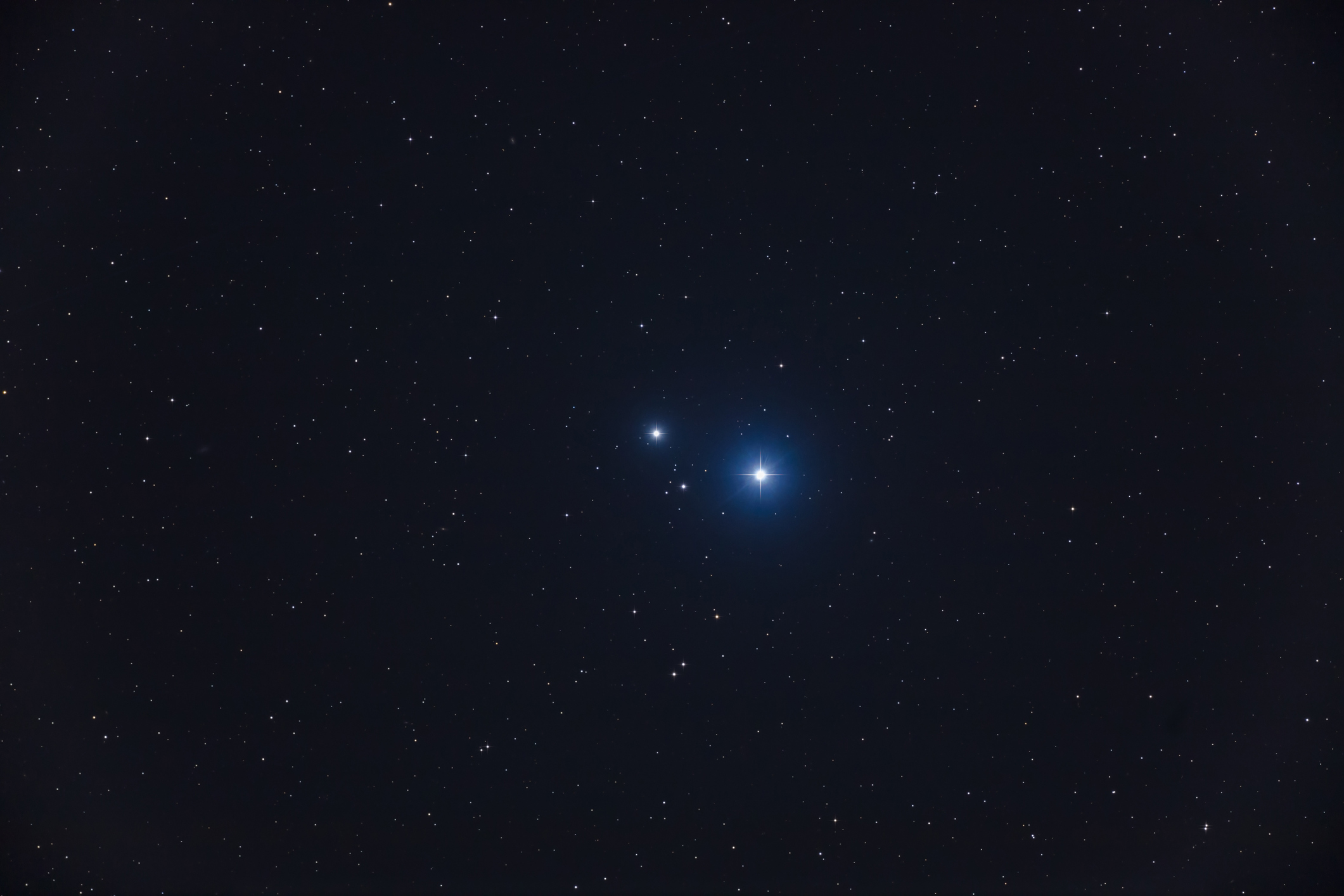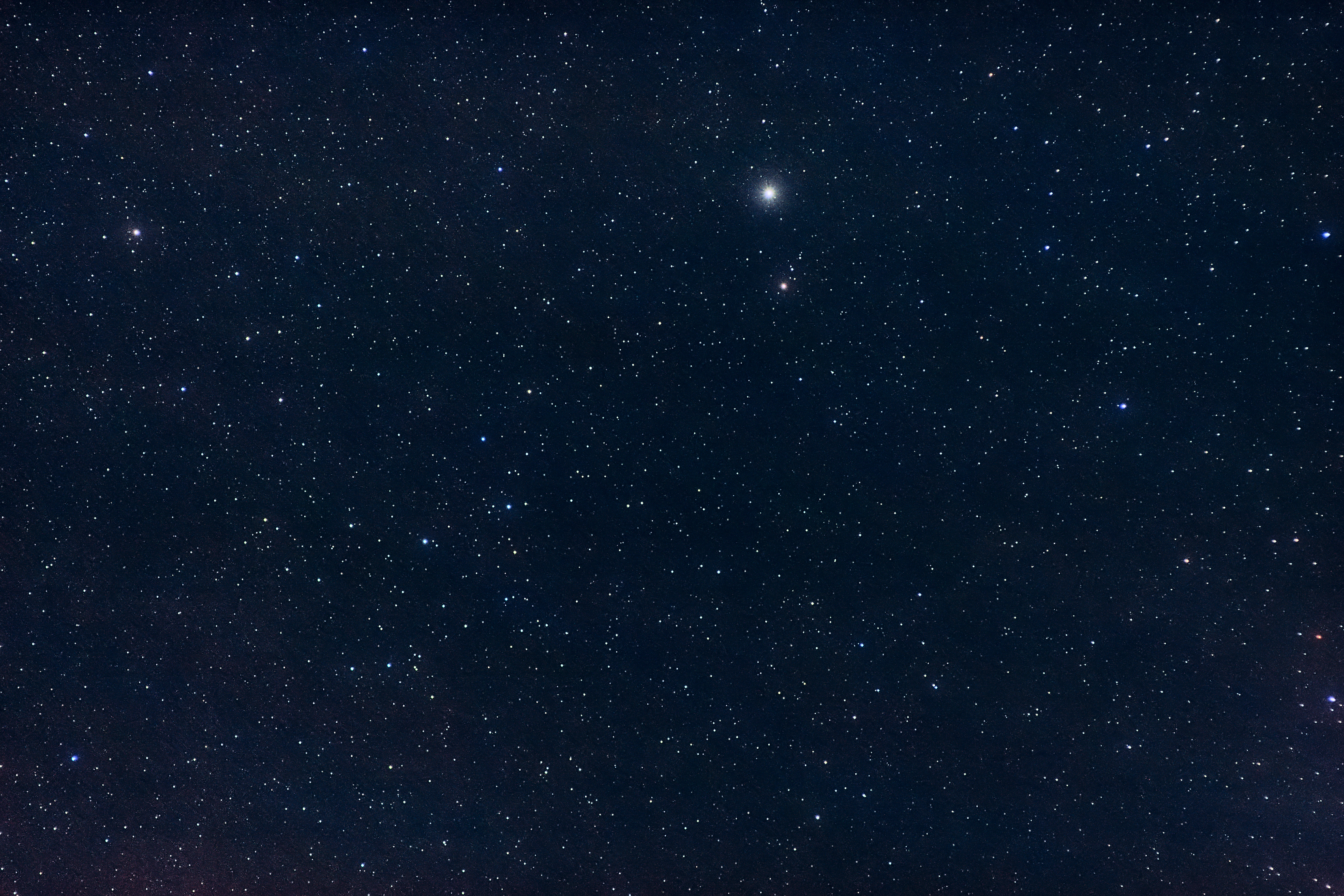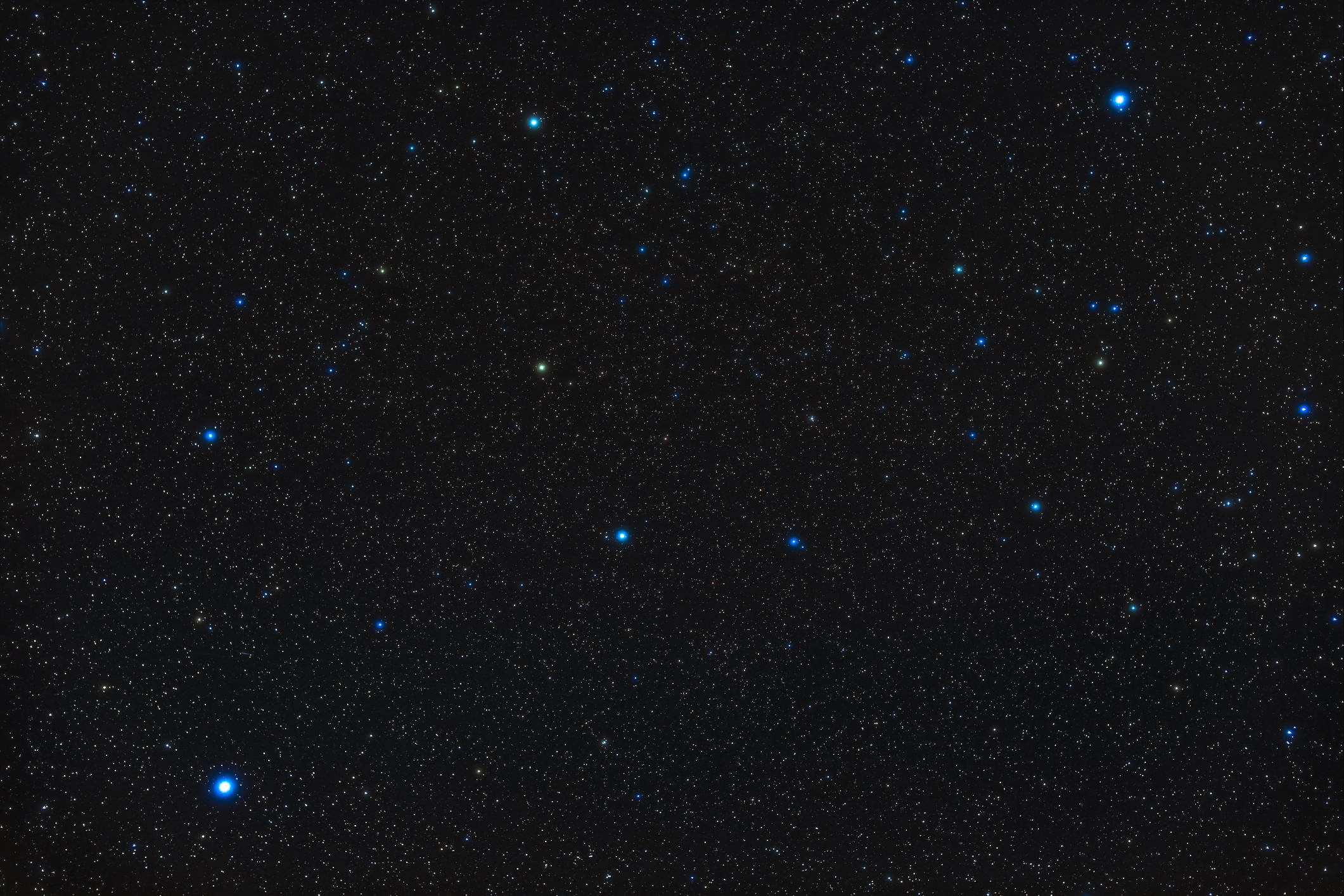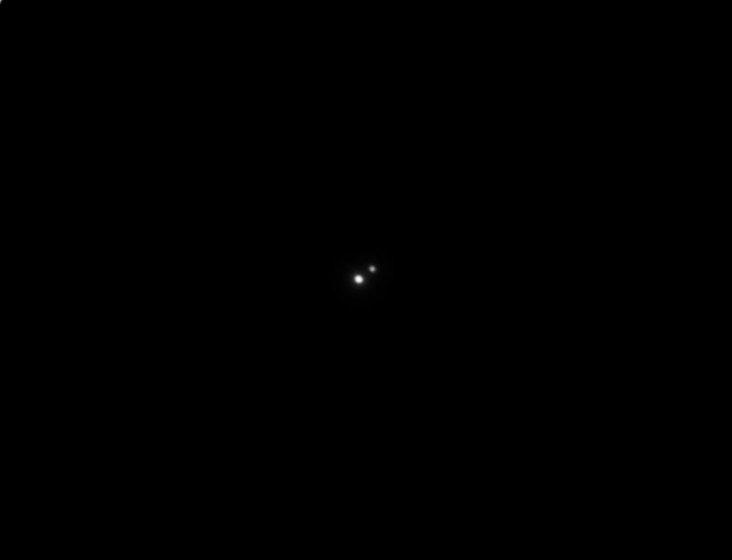The double stars of spring offer twice the skywatching fun this season

Now that we are officially into spring, skywatchers are becoming more aware of the change in the celestial scenery.
Stepping outside between 10 p.m. and midnight local daylight time, we immediately notice the brilliant luminaries of winter taking their leave in the western sky: Orion is beginning to disappear below the western horizon. Low on the west-northwest horizon, Taurus the Bull is also ready to drop out of sight. If you look low to the west-southwest, you can still glimpse Sirius, the brightest of all the stars. Normally appearing a brilliant blue, its position down in the horizon haze may cause it to scintillate or splinter into different colors of the rainbow.
Currently dominating the sky overhead and toward the south and east are the stars of spring, not as dazzling as the winter star patterns, but all still stand out in their own way nonetheless. Hans Augusto Rey, who wrote two immensely popular star guides — "Find the Constellations" and "The Stars — A New Way to See Them" (both published by Houghton Mifflin Company, Boston), described the region of the sky now practically overhead as the "Carnivores Corner." "The constellations that are now in view," Rey noted, "all represent carnivores: The Great Bear (Ursa Major), Big and Little Lion (Leo and Leo Minor), Hunting Dogs (Canes Venatici); and also, Lynx, Dragon (Draco), and Little Bear (Ursa Minor) adjoining them."
Interestingly, ten of the 21 brightest stars in the sky are now in full view. At no other time of the year are so many visible at one time. And also, at this time of year, we have a great view of some of the most interesting double stars in our sky.
Related: Night sky, March 2023: What you can see tonight [maps]
Singles outnumber doubles

Looking for a telescope to observe double stars in the night sky? We recommend the Celestron Astro Fi 102 as the top pick in our best beginner's telescope guide. Don't forget a moon filter!
Most of the stars that we can see with our eyes are double stars, also called binary stars. These are star systems composed of one or more companion suns. And yet, a study made nearly 20 years ago concludes that the majority of the stars in our galaxy are singular and lack a companion star.
Sometimes, two stars are widely separated in space, but from our Earthly vantagepoint they appear aligned in such a way as to seem as if they are physically related to each other. Such optical doubles can be distinguished from true binary stars only by observations spread over many years which may eventually reveal the actual motion of the stars.
Breaking space news, the latest updates on rocket launches, skywatching events and more!
Observing double stars with a small telescope can be fun, yet quite challenging; they can be used to test the resolving power of your telescope as well as the steadiness of the atmosphere above your observing site. A 2.4-inch refractor should be able to split stars of similar brightness separated by about two arc seconds in very good conditions at high magnification. A 4-inch reflector should do roughly twice as well — about 1 arc second. If you fail with a particular double, it may be that the atmospheric seeing could be a lot better, or your telescope is not performing up to par.
The horse and rider
Perhaps the most noteworthy example of a double star is now high in our evening sky: The second magnitude twinkler at the bend of the handle of the Big Dipper, popularly known as Mizar. Located 12 arc minutes (or slightly less than half the apparent diameter of the moon) from Mizar sits a fainter, fourth magnitude star known as Alcor. The pair was supposed by the Arabs to serve as an eye test. If you could see it, your vision was considered normal. Mizar and Alcor were also known as the "Horse and Rider."
If you point a telescope at Mizar itself, you should be able to see that it is actually two stars with a separation of 14 arc seconds. And interestingly, both of these stars possess their own companions which were discovered through use of spectroscopes. So, Mizar is, in reality, a quadruple star system.
But wait! There's more ...
Mizar and Alcor were always thought to be merely optical doubles and physically unrelated. Then, in 2009, two separate teams of astronomers discovered that Alcor itself was a binary star and that it was indeed gravitationally bound to Mizar. This would suggest that Mizar and Alcor are, in fact, a sextuple star system!

"Most beautiful"
At around 10 p.m., the seven stars of the Big Dipper have rotated to a point high in the northeast sky. Follow the curve of the Big Dipper's handle past its end star and right around until you come to a brilliant star with a distinctly yellow-orange hue. That is Arcturus, one of the three brightest stars in the northern celestial hemisphere. It belongs to Boötes, a constellation representing the man who was supposed to drive the Bear round and round the pole. You may well imagine a large kite outlined by the stars of Boötes, with Arcturus at the point where the tail is attached; or you may imagine an ice cream cone with a hole at the bottom, with a dribble of orange sorbet leaking out from where Arcturus is.
The kite or ice cream cone rises sideways. Izar, is the middle star on the left side of the kite or cone. Astronomer Wilhelm Struve (1793-1864), who observed it in the 1820s was so taken by its fine contrasting colors — orange and blue — that he labeled it "Pulcherrima," the Latin word for most beautiful in appreciation of the fine color contrast. Although the separation between the two components is rather tight — measuring only 2.8 arc seconds — the respective magnitudes are 2.5 and 4.9 and the contrasting colors are indeed one of the most beautiful in the entire sky. The brighter star appears a yellowish hue while the dimmer star is bluish. And yet, the hues have also been called "pale orange and sea green."
The "twin headlamps"
Dominating the southeast part of the sky during the late evening is the second largest constellation, and a member of the zodiac, Virgo the Young Maiden. Within its boundaries is a bright blue star, Spica. To find it, simply use the same methodology you used to find Arcturus: follow the curve of the Big Dipper's handle to Arcturus and the same arc, continued past that brilliant fiery hued star for about the same distance, will come to Spica. In old star atlases that contained allegorical pictures, Virgo holds some spikes of wheat where Spica glows.
At about 10 p.m. sitting about 15 degrees to the upper right of Spica is a classic binary, Gamma Virginis or Porrima, one of the earliest pairs to be discovered with the telescope, by James Bradley and James Pound in 1718. Its name is to honor of the "Goddess of Prophecy."
Located at a relatively close distance relative to our sun of just 39 light-years, the components are equal in brightness at magnitude 3.6. In 1920 they attained their greatest separation in telescopes, equal to about one-fifth the apparent width of the moon. Thereafter the two stars started closing in on each other and in 2008 the couple reached a minimum separation of just 0.4 of an arc second and appeared as a single point of light. Fortunately, the two stars are now rapidly separating and currently are separated by roughly 3 arc seconds. Observers have described the colors of both stars as white, bright yellow or pale yellow. Is it any wonder that astronomer Robert Burnham Jr. in his three-volume "Celestial Handbook" (Dover 1978) wrote that this double looked like "twin headlamps of some celestial auto, approaching from deep space."
Yellow or green?
No one can miss seeing a fine Sickle of stars which glows high in the southern sky this week at around 10:30 p.m. Many people hail the appearance of this backwards question mark pattern of stars as one of the first signs of spring. Regulus is the name of the bright star at the end of its handle. The Sickle and its accompanying right triangle of stars to its left form the ancient constellation of Leo the Lion. Pretend that the bowl of the Big Dipper is filled with water and that someone drilled a hole in it, allowing all the water to spill out. The water would ultimately flow down onto the Lion.
The third brightest star of Leo is located in the blade of the Sickle, known as Algieba. The name is probably is from an erroneous form of the Arabic Al Jabbah or Juba, "the Lion's Mane." It is a well-known binary that is not too dissimilar from Gamma Virginis, having yellowish components of magnitude 2.3 and 3.5. Both systems have greatly elongated orbits.
Contrary to popular belief, however, the smaller component of a binary system does not revolve around a motionless larger star. Rather, both stars move around the common center of mass of the system. The pair of Algieba is slowly widening, although both stars are still rather close to each other, separated by about 5 arc seconds. Many observers see both components of Algieba as a similar gold or gold-orange. And yet some even have found a hint of green in the fainter (but slightly hotter) star. It can be fun to ask several people what colors they would ascribe to the two stars of the Algieba system to see how their perceptions vary.
If you're hoping to see some double stars for yourself, our guides walking you through the best telescopes and best binoculars are a great place to start. And if you're looking to try your hand at taking photos of some of these double stars, don't miss our guides on the best cameras for astrophotography and best lenses for astrophotography.
Joe Rao serves as an instructor and guest lecturer at New York's Hayden Planetarium. He writes about astronomy for Natural History magazine, the Farmers' Almanac and other publications. Follow us on Twitter @Spacedotcom and on Facebook.

Joe Rao is Space.com's skywatching columnist, as well as a veteran meteorologist and eclipse chaser who also serves as an instructor and guest lecturer at New York's Hayden Planetarium. He writes about astronomy for Natural History magazine, Sky & Telescope and other publications. Joe is an 8-time Emmy-nominated meteorologist who served the Putnam Valley region of New York for over 21 years. You can find him on Twitter and YouTube tracking lunar and solar eclipses, meteor showers and more. To find out Joe's latest project, visit him on Twitter.



